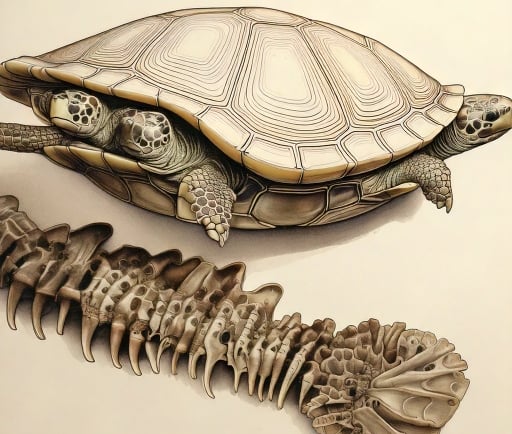The Anatomy of Turtles: Understanding Their Shells


Introduction to Turtle Anatomy
Turtles are among the most unique creatures on our planet, renowned for their distinct shells. The shell, which serves as a protective barrier, is intricately connected to the turtle's skeletal system. Understanding how turtles grow and use their shells provides fascinating insights into their biological and ecological significance.
The Structure of a Turtle's Shell
The shell of a turtle is not merely a simple external structure; it is a sophisticated anatomical feature. Composed of two primary parts—the carapace (the top) and the plastron (the bottom)—the shell is formed from bony plates that are fused to the turtle's ribs and spine. This evolutionary adaptation allows turtles to retract into their shells for protection against predators, making it an essential survival mechanism.
The Connection Between Shell and Bone
One remarkable aspect of a turtle’s shell is its direct connection to the skeletal system. Unlike many other animals, turtles cannot separate themselves from their shells; instead, the shell is an integral part of their anatomy. This connection underscores the turtles' unique evolutionary path and highlights their adaptability. The bony structure of the shell calcifies over time, offering not only physical protection but also a critical role in the turtle's mobility and overall health.
Furthermore, the shell serves as a vital component in the turtle’s physiological processes. For instance, the shell aids in respiration; as turtles inhale, the shell expands and contracts, which contributes to airflow. This connection between the shell and the bones is crucial for maintaining essential biological functions, emphasizing the balanced system that turtles have developed over millions of years.
Conclusion
In conclusion, the anatomy of turtles reveals a complex relationship between their shells and skeletal structures. A turtle’s shell is not just for protection; it is intricately tied to their physical well-being and survival. Awareness of these remarkable features can deepen our appreciation for these ancient reptiles. As wildlife enthusiasts, it is vital to continue advocating for the preservation of turtles and their habitats, ensuring that these extraordinary creatures continue to thrive on our planet.
